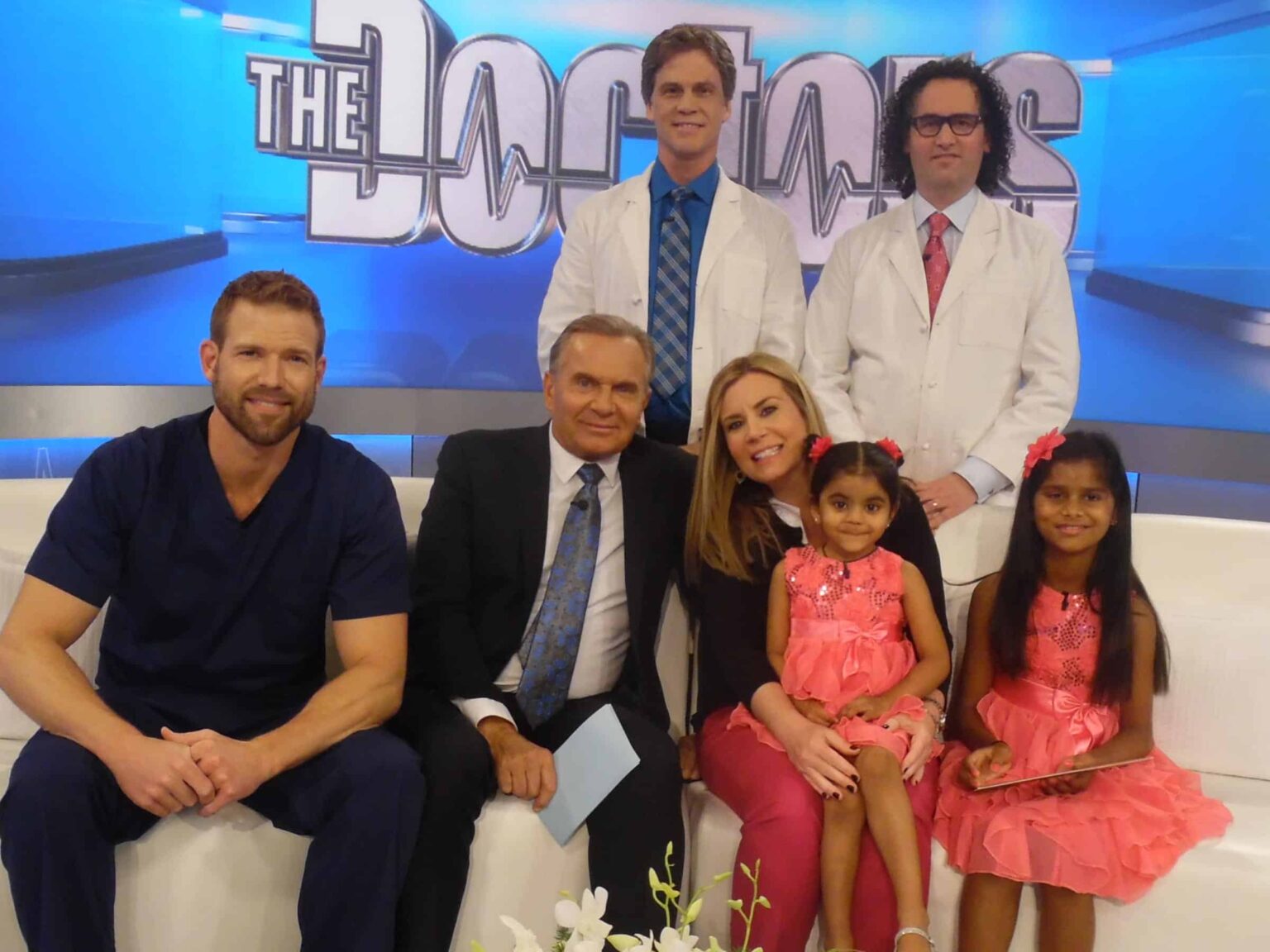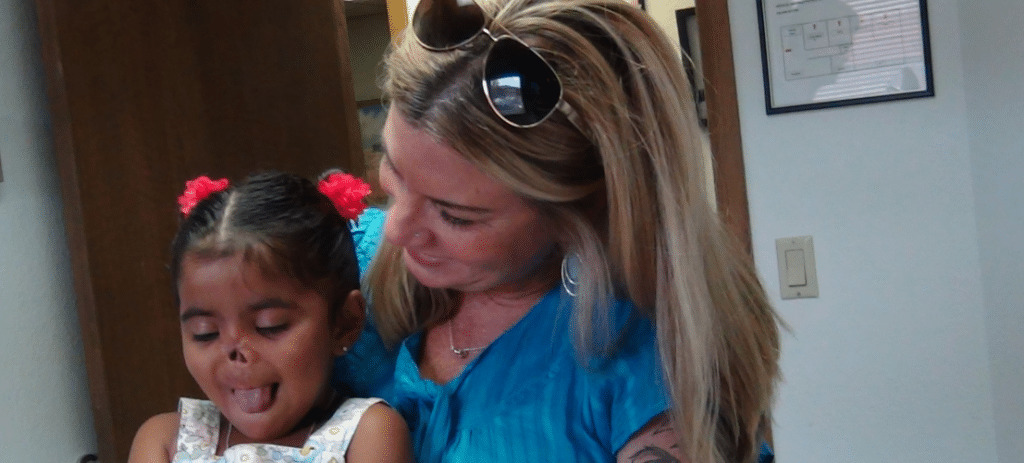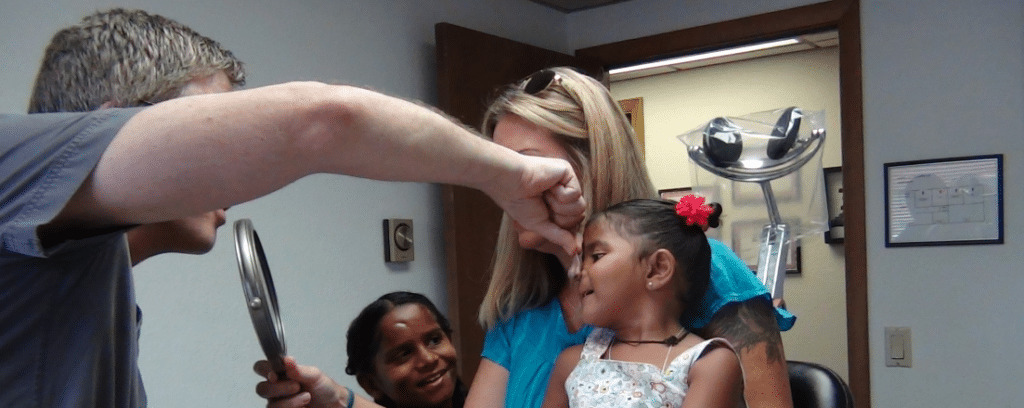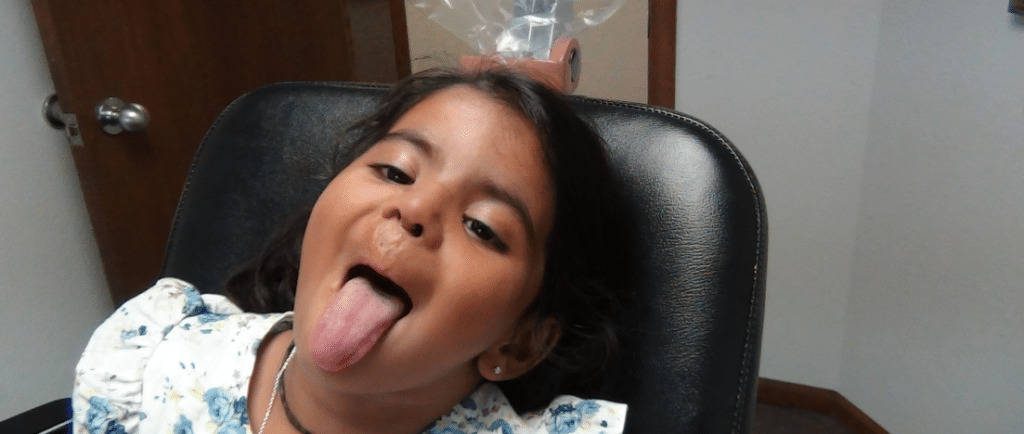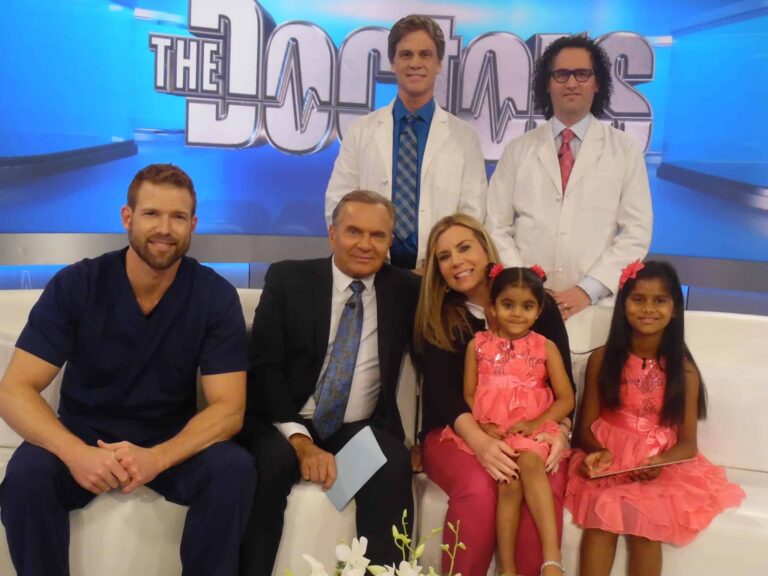Greg Gion, Wisconsin Anaplastologist An Occasion to Help Roopa.
A series of thoughts from Greg Gion, anaplastologist and his experience on the nationally televised program The Doctors.
Early April 2015 is when I faxed the releases and mailed my video from a New Jersey hotel actually to The Doctors producers at Paramount Studios in Los Angeles. At that point I was “all-in”, and Roopa’s cute little face and smile were seared onto my mind very quickly. Seeing more pictures of her with her mom Kristen and her sister Munnie all together made the decision so much easier, and I was immediately put at ease with the prospect of taking this on after my first phone call with Kristen. What a wonderful, courageous woman who was warm and down to earth, now ready to bring her daughters to Madison, WI. I thought I had pressure, but look what she was happy to take on.
Two Days to Make a Nasal Prosthesis
The plan was to focus on creating Roopa’s adhesive-retained nasal prosthesis in just 2 days, rather than the usual 3 days that I prefer. And this worked out just fine perhaps only because Roopa was so perfectly cooperative and relaxed during all fitting sessions even the procedure to take her facial impression! We were all amazed as she sat perfectly still, even giggling, as I spread the toothpaste-like silicone impression material all over her little nose and cheek area, then lifting it free from her face. The simple procedure is not uncomfortable, but would understandably frighten most children.
Clinical Challenges in Facial Prosthetics
The clinical aspects of fitting such a young child with a facial prosthesis loomed for me throughout the process. However, Roopa sitting in Kristen’s lap with sister Munnie patiently and quietly entertaining herself allowed the necessary technical work to progress rapidly and before long we arrived at the ideal nasal shape. But again, the attachment surfaces, the transitions, and durability of margins and coloration all demanded careful consideration.
Keeping on a Nasal Prosthesis
The reality of this child keeping a nasal prosthesis securely on her face was one major unknown, and the degree to which her mom Kristen could be expected to manage the prosthesis and maintain its aesthetics was quite another. The reality is that Roopa’s prosthetic nose would eventually be detected, at least by her closest playmates and peers. In view of this the decision was made to mold in toughness with coloration and margins meant to retain good aesthetics over a long period. It was thought that the thinly-edged highly characterized techniques used for adults while almost seamless on the face could deteriorate more rapidly for a child only to cause more stress and disappointment for the whole family. Artistically, it goes against every instinct not to finesse something that could be finessed to near perfection, but ethically it seemed prudent to compromise somewhat in aesthetics so as not to set expectations unrealistically high for Roopa and Kristen. We would always hope that our prosthesis becomes more of a blessing than a burden.
Roopa Provided with 2 Nasal Prostheses
Roopa was provided with 2 prostheses using the highest tear strength silicone used for maxillofacial prosthetics; one prosthesis being slightly lighter in color, but both with deep coloration to last through cleanings, scuffings and daily wear and tear.
The Bittersweetness of Final Delivery
The afternoon of delivery was bittersweet in having to say good bye after just getting to know Roopa, sister Munnie and mom Kristen, having to focus so intently just on getting the prosthesis done! And Roopa’s prosthesis, like each prosthesis we do becomes an art project for the medical artist. You want to keep working at it. It can always be made even better. But out the door they went with as much instruction and supplies and encouragement as time would afford.
On TV
The Doctors interview and Roopa’s new prosthesis by Madison’s Greg Gion.
The Future of Roopa’s Nasal Prosthesis
The final lingering thought swirls around the issue of what does Roopa’s future hold with regard to her long term prognosis. As she gets older she will outgrow her nose prosthesis at some point, and we can make her a new one? At some point she may become a candidate for the surgical reconstruction of her nose using her own tissue from other areas of her body. For this, will we be able to find a plastic surgeon with the specialized expertise to offer a high probability of constructing a functioning nose that is also truly successful in its final aesthetic shape? If not, will I have the opportunity to create for Roopa a more permanent prosthetic nose that is attached to bone-anchored fixtures, known as osseointegration? There are certainly options for Roopa.
The Benefits of Early Introductions to Prosthesis
The true value for Roopa and her family in Roopa’s getting a prosthetic nose at such a young age is that they now have an early introduction to what a prosthesis is and how it works. Regardless of how the prosthesis is used currently they now have practical experience as a baseline so that going forward we can discuss different adhesives, osseointegration, better materials, and newer scanning/prototyping capabilities for even better and faster results.

